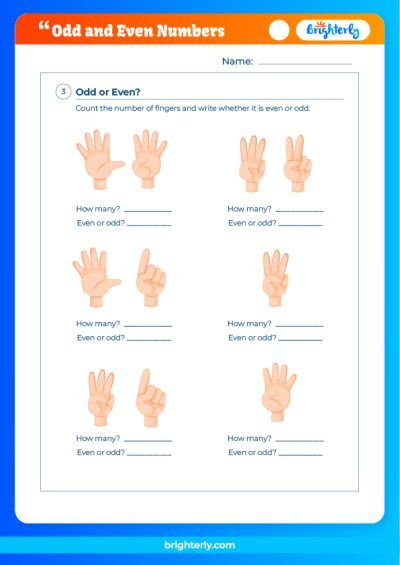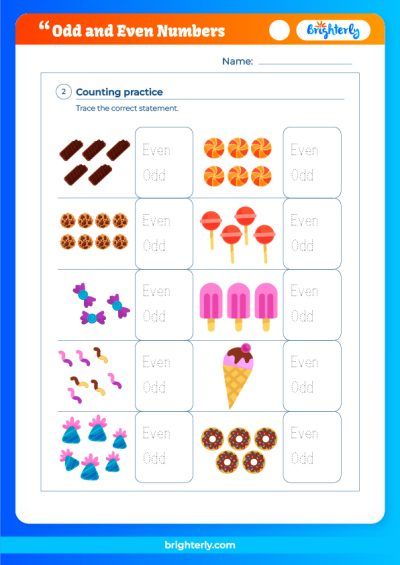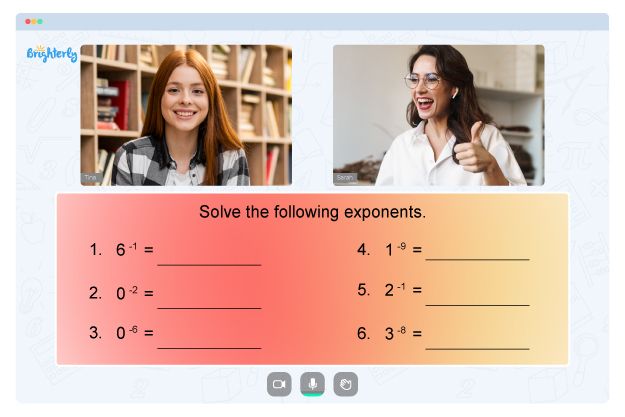Even Numbers – Definition with Examples
Created on Jan 03, 2024
Updated on January 9, 2024
Welcome to another enlightening brought to you by Brighterly, the beacon of fun and engaging education for children! Today, we dive into the fascinating world of even numbers. These numbers permeate every aspect of our daily lives, often without us realizing their significance. From the two wheels on your bike to the four legs of your pet dog, even numbers are everywhere!
In this article, we’ll unravel the mystery of even numbers, introducing them in an easy-to-understand way with ample examples. We will cover topics such as the definition of even numbers, their differences from odd numbers, and a list of even numbers up to 200. We’ll also explore consecutive even numbers, the concept of even natural numbers, and many exciting properties of even numbers.
What are Even Numbers?
Even numbers are an integral part of the numerical universe. Simply put, an even number is any integer that can be evenly divided by 2 without leaving a remainder. This simple, yet crucial definition gives us a world of numbers that include 0, 2, 4, 6, 8, and so forth, extending to infinity in both positive and negative directions. These numbers play a fundamental role in our everyday lives, forming the backbone of many basic mathematical concepts and principles. For instance, even numbers help in understanding patterns, organizing data, and solving complex equations in fields ranging from science and engineering to finance and statistics.
Odd and Even Numbers
To fully appreciate even numbers, we must also understand their counterparts – odd numbers. Odd numbers, unlike even numbers, leave a remainder of 1 when divided by 2. The alternating sequence of even and odd numbers throughout the number line provides a balance in the world of mathematics, making it easier for us to comprehend numerical patterns and apply mathematical operations. For example, if we take the number line and label each number as even or odd, we get a rhythmic pattern of E-O-E-O-… and so forth. This consistent pattern between even and odd numbers aids in developing intuition about the structure of numbers.
List of Even Numbers 1 to 200
Having defined even numbers, let’s list them from 1 to 200. This exercise will give you a better grasp of how even numbers populate the number line and their predictable pattern. Here are the first ten even numbers: 2, 4, 6, 8, 10, 12, 14, 16, 18, 20. As you may notice, there’s a common difference of 2 between successive even numbers. Continuing this pattern, you can generate the entire list of even numbers up to 200.
Consecutive Even Numbers
Consecutive even numbers are even numbers that follow each other directly without any odd numbers between them. For example, 2 and 4 are consecutive even numbers, as are 8 and 10. You can think of consecutive even numbers as ‘neighbors’ on the number line that share the same ‘evenness’. Understanding consecutive even numbers can be particularly useful in solving algebraic equations and working out mathematical puzzles.
Even Natural Numbers
Natural numbers, also known as counting numbers, start from 1 and go on to infinity. Even natural numbers are simply the even numbers within this set. So, 2, 4, 6, 8, and so forth, are even natural numbers. These numbers are fundamental in counting and ordering operations, especially in primary school mathematics.
To consolidate your knowledge, we recommend using our Even Numbers worksheets from Brighterly.
Properties of Even Numbers
Even numbers exhibit certain mathematical properties that make them unique. Here are a few of them:
- Addition of Even Numbers: The sum of two even numbers is always even.
- Subtraction of Even Numbers: The difference between two even numbers is either even or odd, depending on whether they are consecutive.
- Multiplication of Even Numbers: The product of two (or more) even numbers is always even.
- Even Prime Numbers: There is only one even prime number – 2. All other primes are odd.
Understanding these properties can help simplify mathematical operations and problem-solving.
How do we know that a Number is Even or Odd?
To determine if a number is even or odd, you simply divide it by 2. If it divides evenly, i.e., without a remainder, then it’s an even number. If there’s a remainder of 1, it’s an odd number. This test can be performed with any integer, positive or negative, and is a fundamental concept taught in early mathematics education.
List of even Numbers Up to 100
In addition to understanding the definition and properties of even numbers, it can also be helpful to recognize them at a glance. Here’s a list of even numbers up to 100. The first ten are 2, 4, 6, 8, 10, and so on until 100. Notice the regular pattern of these numbers; they all end in 0, 2, 4, 6, or 8.
Solved Examples
Let’s solve some example problems to understand even numbers better:
-
Example 1: Find the sum of 2 and 4.
- Solution: 2 + 4 = 6. As expected, the sum of two even numbers is even.
-
Example 2: Subtract 6 from 10.
- Solution: 10 – 6 = 4. The difference between two even numbers is even.
Practice Questions on Even Numbers
To help solidify your understanding of even numbers, here are a few practice problems:
- List the even numbers between 20 and 30.
- Is 1001 an even number?
- If x and y are even numbers, is xy (x multiplied by y) always even?
Conclusion
At Brighterly, we believe that mathematics, like any language, is best learned when its components are understood fundamentally. Our exploration of even numbers is a testament to this approach.
Even numbers form the backbone of many mathematical concepts and are integral to understanding more complex ideas in number theory and beyond. Their distinct properties, such as divisibility by 2, exhibit unique patterns that are essential in problem-solving and logical reasoning. They demonstrate mathematical consistency, balance, and order, providing a solid foundation upon which further mathematical knowledge can be built.
Moreover, understanding even numbers is not just an academic exercise. It’s a stepping stone towards developing numerical fluency, critical thinking, and problem-solving skills, all of which are highly valuable in our increasingly data-driven world.
At Brighterly, we’re passionate about making mathematics fun, engaging, and accessible for all learners. And we’re thrilled to be part of your mathematical journey, illuminating the path with clear explanations, vibrant examples, and interactive exercises. As we conclude our exploration of even numbers, remember that this is just the beginning. There’s a whole universe of numbers out there waiting to be discovered. And we can’t wait to discover it with you!
Frequently Asked Questions on Even Numbers
Are all even numbers divisible by 2?
Absolutely! By definition, an even number is any integer that can be divided evenly by 2, meaning without leaving a remainder. This property is what distinguishes even numbers from odd numbers. Whether it’s 2, 200, or 2 million, if a number can be divided by 2 without a remainder, it’s an even number!
Are there negative even numbers?
Yes, there are indeed negative even numbers. This concept might seem strange at first, but it’s quite straightforward when you think about it. Negative even numbers are simply the negative counterparts of positive even numbers. For instance, if you consider 2 and -2, both are even because they can be divided evenly by 2. This property holds true for all negative even numbers. They follow the same rules and patterns as positive even numbers, just in the opposite direction on the number line!
With Brighterly, every question is an opportunity to learn something new. So keep those questions coming, and let’s continue exploring the fascinating world of mathematics together!






